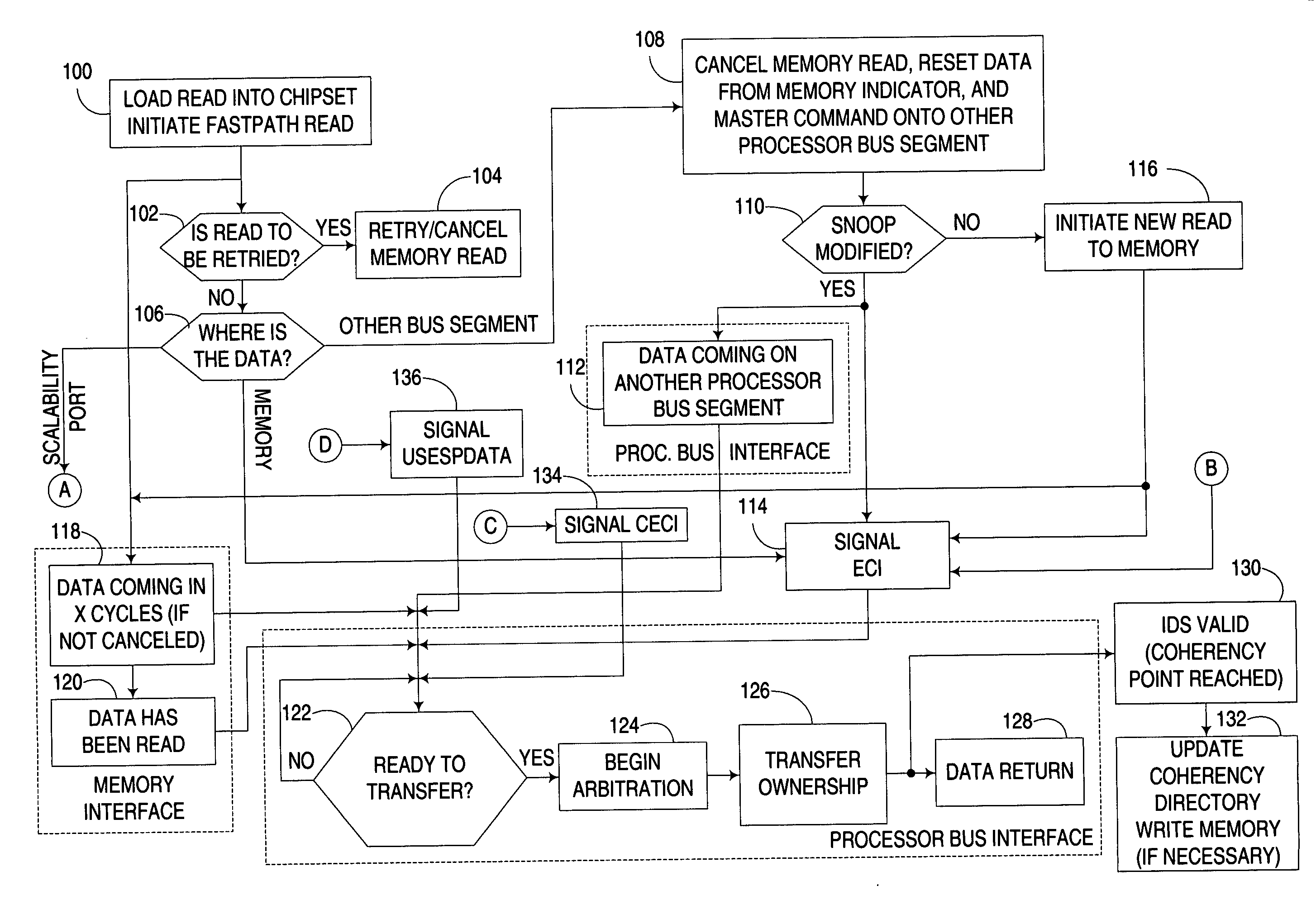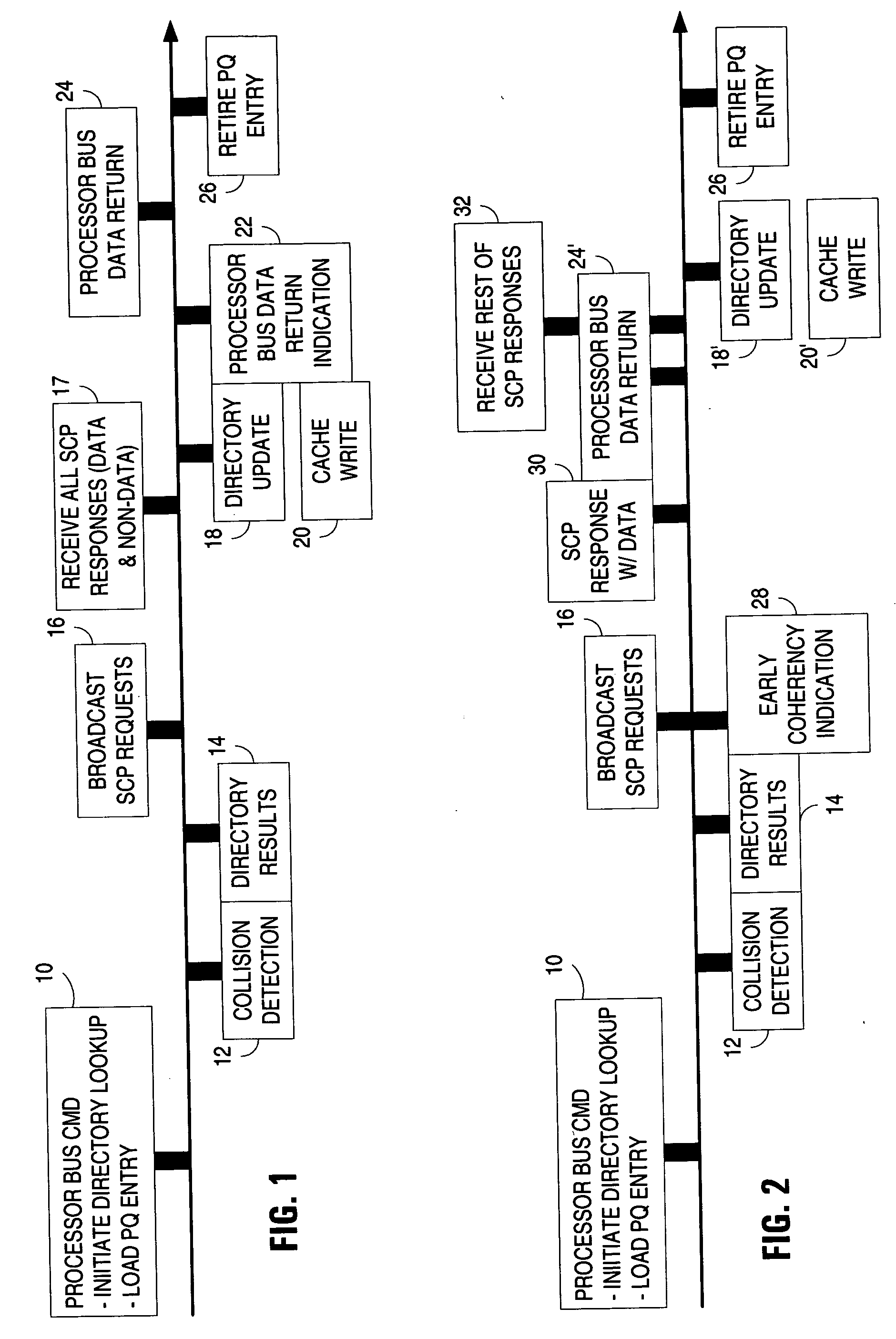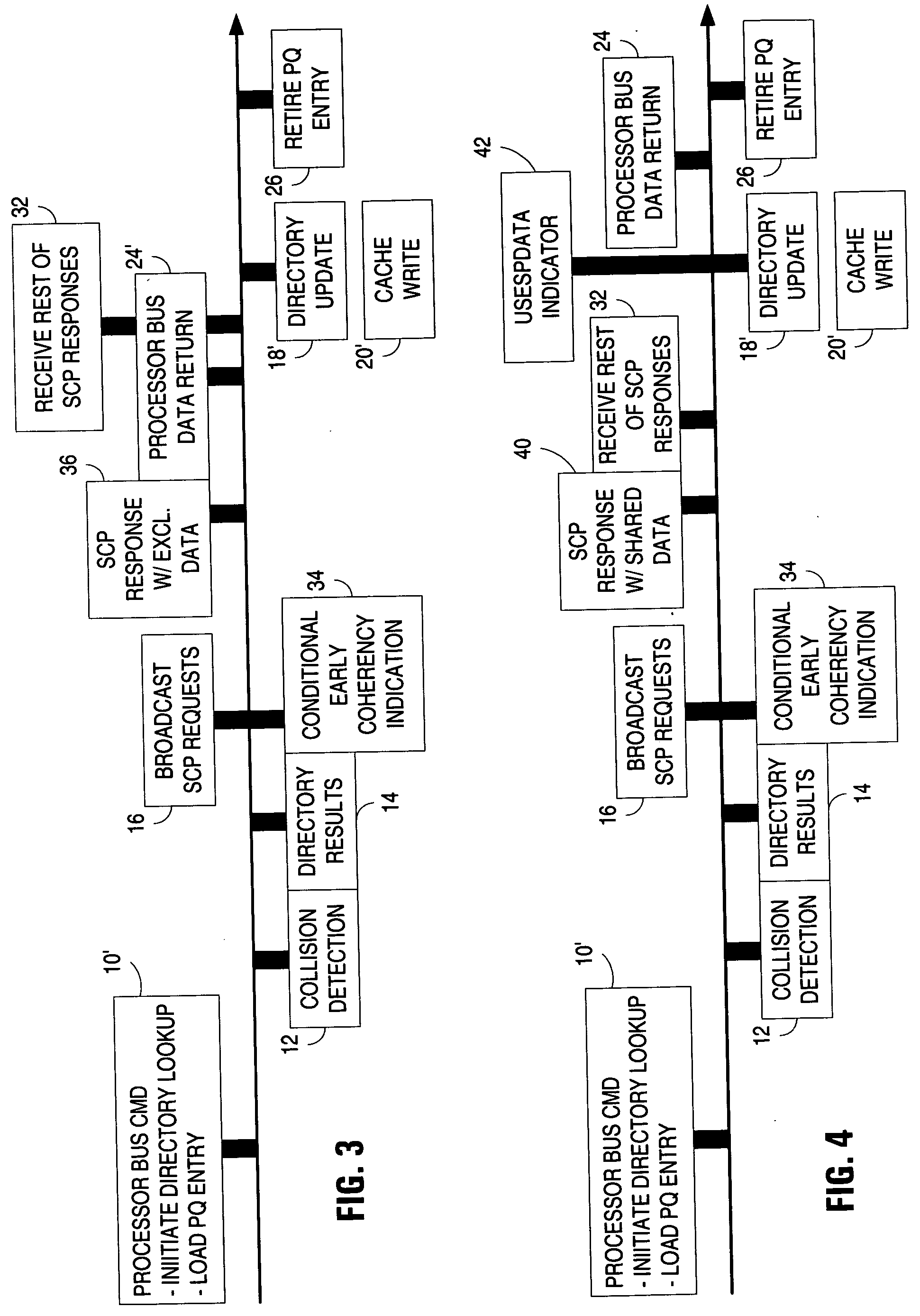Early return indication for return data prior to receiving all responses in shared memory architecture
a shared memory and return data technology, applied in the field of computers and data processing systems, can solve the problems of significant bottlenecks that can occur in multi-processor computers, associated with the transfer of data to and from each processor, and the limitation of such computers, and achieve the effect of little or no latency
- Summary
- Abstract
- Description
- Claims
- Application Information
AI Technical Summary
Benefits of technology
Problems solved by technology
Method used
Image
Examples
Embodiment Construction
[0031] The embodiments discussed and illustrated hereinafter utilize early return indication to enable one communications interface to anticipate a data return from a source over another communications interface, and based upon that anticipation, prepare for communication of the return data, e.g., by planning out and executing any bus arbitration / signaling, preparing a data response packet, etc. Then, once the data is returned from its source over the other interface, the communications interface can communicate the data directly to the entity that requested the data with minimal latency and with a minimal amount of buffering.
[0032] Embodiments consistent with the invention, in particular, accelerate the return of data over a first communications interface to a requester that has issued a request for that data whenever it is determined that the return data will be returned by a source among a plurality of sources that are accessed via a second communications interface, and that the...
PUM
 Login to View More
Login to View More Abstract
Description
Claims
Application Information
 Login to View More
Login to View More - R&D
- Intellectual Property
- Life Sciences
- Materials
- Tech Scout
- Unparalleled Data Quality
- Higher Quality Content
- 60% Fewer Hallucinations
Browse by: Latest US Patents, China's latest patents, Technical Efficacy Thesaurus, Application Domain, Technology Topic, Popular Technical Reports.
© 2025 PatSnap. All rights reserved.Legal|Privacy policy|Modern Slavery Act Transparency Statement|Sitemap|About US| Contact US: help@patsnap.com



